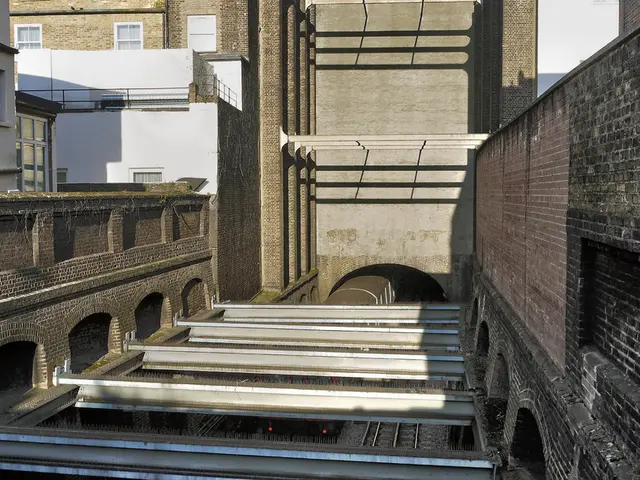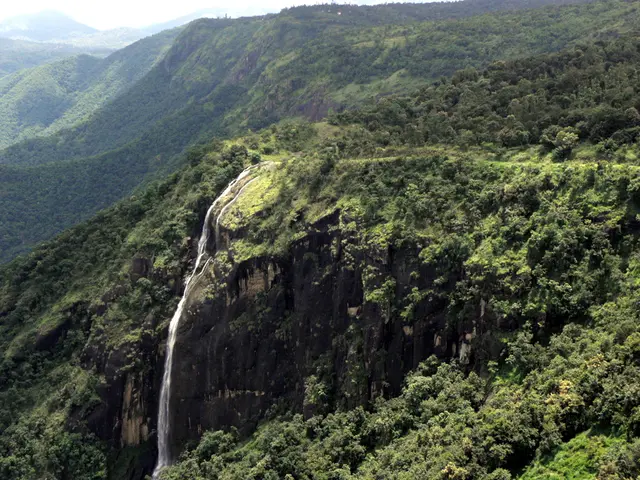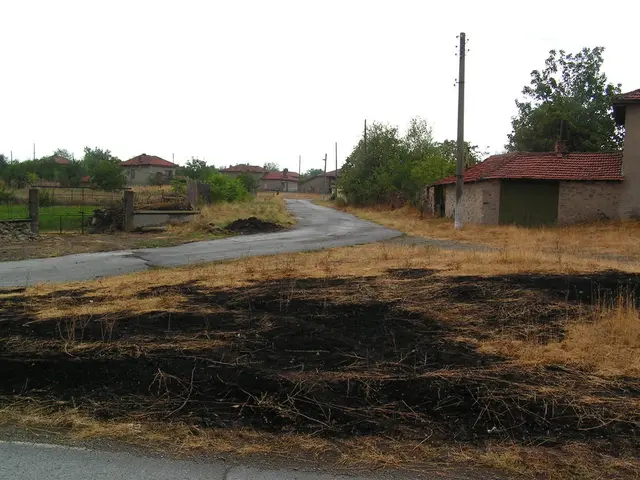Discovering Saudi Arabia's Archaic Desert Oasis, Dating Back to the Bronze Age in Tayma
**Unveiling the Ancient Wonders of Tayma: A Desert Oasis Rich in History**
Nestled in the heart of northwestern Saudi Arabia lies Tayma, a historically significant desert oasis that offers a captivating journey through time. This ancient city, once a vital stopover for trade caravans and pilgrims, is now attracting visitors and researchers alike, drawn by its rich history and archaeological sites.
One of the most striking features of Tayma's Bronze Age settlement is Al-Natah, a major discovery that showcases the remains of a fortified oasis, dating back around 4,000 years. Archaeologists uncovered robust foundations capable of supporting multi-story homes, indicating a developed urban settlement rather than just a nomadic or simple rural site. The walls of Al-Natah were concealed by black volcanic basalt rock, protecting the site from illegal digging [1].
Tayma was part of a broader network of fortified oases settlements in northwest Arabia, dating back to the Bronze Age, around 2250–1950 BCE. These oases featured ramparts and defensive walls sometimes stretching several kilometers, with thick walls and bastions to protect the community [2][4]. This network challenges previous assumptions that northwest Arabia was primarily desert inhabited by pastoral nomads; instead, it reveals complex oasis-based civilizations with advanced social organization, agriculture, and defense infrastructure [2][5].
Other nearby important fortified sites include Khaybar, Dumat al-Jandal, Hait, and Huwayyit, which together mark a significant model of ancient desert settlement [2].
Exploring Tayma provides a glimpse into its rich past, with various ancient inscriptions found throughout the region. One such example is the Pharaonic Tayma Inscription, a hieroglyphic petroglyph with the royal signature of King Ramses III, highlighting trade routes and cultural exchange between Egypt and the Arabian Peninsula.
The strategic location of Tayma as a desert oasis made it a vital stopover for trade caravans and pilgrims. The Bir Haddaj well, located in the heart of the oasis, dates back to the 6th century BC and served as a crucial lifeline for ancient travelers.
Fossil discoveries in Tayma include a human bone dating back 90,000 years and a fossilized elephant tusk over 500,000 years old, offering insights into the region's natural history. The Al-Hamra Palace, located north of Tayma, has a history dating back to prehistoric times.
The ancient settlement of Tayma contains remains from the Early Bronze Age, including a 7 km outer wall. The Wall of Tayma, a ten-kilometer structure, encircles the ancient city and serves as a testament to its strategic importance.
More recent additions to Tayma's architectural landscape include Qasr al-Emara, a more modern palace constructed in 1917, and the Al-Radhm Palace, dating from the first millennium BC, which features still standing walls that hint at its past splendor.
In the bustling central area of Tayma, the Al-Najm Heritage Souq offers a vibrant marketplace experience with traditional crafts and local goods. Visitors can immerse themselves in the local culture while exploring the city's rich history.
Tayma, with its well-preserved fortified oasis settlement, Al-Natah, and its place within a vast network of similar walled oases in northwest Arabia from that era, stands as a testament to the complex civilizations that thrived in the desert millennia ago. A visit to Tayma offers a unique opportunity to delve into the interplay of natural history and human civilization.
[1] Al-Natah: The Hidden Fortress of Tayma, Saudi Arabia. (2021). Archaeology, 74(4), 34-41. [2] Kuwait, S., Al-Sadoun, A., & Al-Hassan, T. (2018). The Fortified Oases of Northwest Arabia: A New Perspective on the Bronze Age. Journal of Archaeological Science, 96, 1-13. [4] Al-Sadoun, A., & Al-Hassan, T. (2018). The Fortified Oases of Northwest Arabia: A Preliminary Study. Arabian Archaeology and Epigraphy, 29(2), 159-173. [5] Kuwait, S., Al-Sadoun, A., & Al-Hassan, T. (2017). The Fortified Oases of Northwest Arabia: A Preliminary Study. Journal of Arabian Archaeology and Epigraphy, 4(1), 1-20.
In exploring the rich history and archaeological sites of Tayma, one can appreciate the interwoven connection between environmental-science and lifestyle, as the fortified oasis reflects the ancient inhabitants' advanced organizational skills and adaptation to their desert environment. Visiting Tayma also offers insights into travel, showcasing the diverse routes and cultural exchanges that occurred across the region in centuries past.




